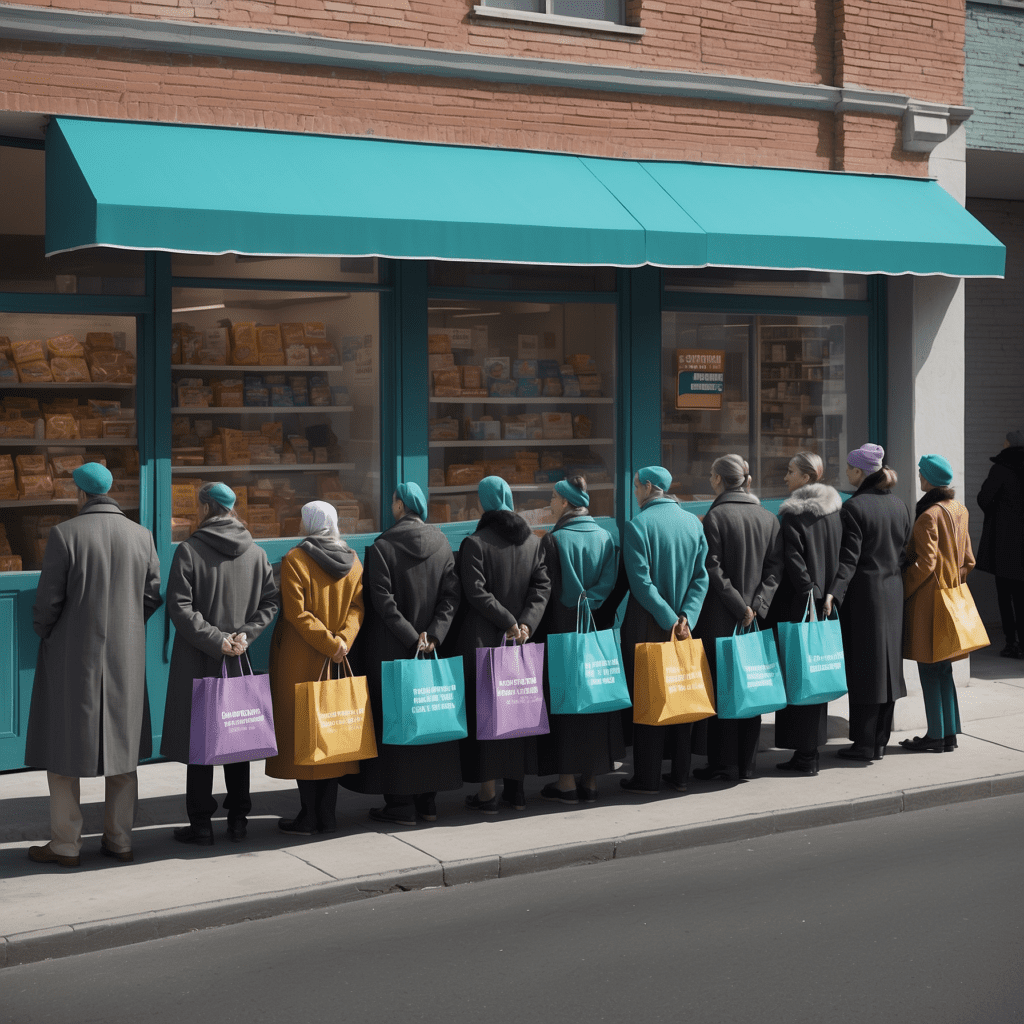Ever wondered what life would be like if the government not only cooked your dinner but also decided what you could eat, when you could eat it, and even how many bites you should take? Welcome to the enthralling world of command economies (a.k.a. planned economies), where the government’s got its fingers in every economic pie imaginable. Buckle up, because we’re about to take a wild ride through some real-life command economy examples, complete with their quirks, perks, and a few eyebrow-raising stories.
We’re diving deep into the nitty-gritty of these centrally planned economies, comparing them to their free-market cousins, and exploring how they’ve fared over time. Some have thrived (kind of), others have taken a nosedive, and a few are still hanging on for dear life. So grab your favorite snack—assuming it’s not rationed—and let’s get this show on the road!
See also: Free Market Economy vs Regulated Market – Differences and Similarities
What is a command economy?
A command economy is an economic system where the government makes all the calls—and we mean all of them. The big cheeses in power decide what gets produced, how it’s made, and who gets to enjoy the fruits of that labor. It’s like having a micromanaging boss for an entire country! In contrast, a market economy lets individuals and private companies take the wheel, driving production and prices based on good old supply and demand.
A command economy tends to exist under a dictatorship or authoritarian government.
In these planned economies, the government’s got its hands in everything from the number of toothbrushes produced to the price of a loaf of bread. Imagine walking into a store where every price tag is set by folks who might have never stepped foot in an actual market. Fun times, right?
You typically find command economies under centralized governments or authoritarian regimes—think less “live and let live” and more “my way or the highway.” The state doesn’t just play a role; it runs the entire playbook. It owns the major industries, calls the shots on production, and decides who gets to buy what. If you thought your HOA was controlling, wait till you see this!
Now, not all countries with command economies are clones of each other. Some might set prices rigidly, while others focus on allocating resources like land and capital—the juicy stuff economists call “factors of production.” It’s like ordering a command economy à la carte.

One of the goals of a command economy is to prevent wealth and power from piling up in the hands of a select few. Think of it as the Robin Hood of economic systems—steal from the rich (or just control them) and give to the poor (or at least try to).
What is the goal of a command economy?
The most important goal of a command economy is to ensure that resources are divvied up fairly—or at least, that’s the official party line. By redistributing wealth and resources through government policies and programs, they aim to reduce income inequality. It’s like trying to split a pizza evenly among a large group, but there’s always someone who gets a bigger slice (we’re looking at you, government officials).
Free transportation in command economy countries—a perk of a centrally planned economy.
What is one way a command economy affects the lives of private citizens?
One major way a command economy impacts private citizens is by clipping their economic wings. With the government controlling all the factors of production and setting prices, opportunities to start your own business or trade freely are about as rare as a unicorn sighting. Want to launch the next big tech startup? In a command economy, you’d better run that by the government first—and don’t hold your breath.
Command Economy Examples
- Cuba
- East Germany (The German Democratic Republic)
- Former Soviet Union
- China
- North Korea
- Belarus
- Vietnam
- Iran
- Libya
We’re going to unpack these examples of command economies by looking at their characteristics, goals, pros and cons, and how they’ve impacted the lives of everyday people. Did they achieve what they set out to do, or did they miss the mark? Let’s find out!
Examples of Command Economy Countries
Historically, many communist economies and socialist economies have embraced the command model. Countries like the former Soviet Union, China under Mao Zedong, and Cuba under Fidel Castro went all-in on central planning. Currently, North Korea is one of the few places still flying the command economy flag high.
But here’s the twist: some of these nations have dipped their toes into market economics, blending the two systems like an economic smoothie. It’s a work in progress, folks.
East Germany (The German Democratic Republic)
First up on our tour is East Germany. Post-World War II, the government had a grand plan: take over private property and banish laissez-faire capitalism to the history books. Their goal? Outshine West Germany’s capitalist economy. By 1949, they had transformed into a full-fledged centrally planned economy.
But there’s a catch. The government wasn’t too keen on people leaving their socialist paradise, so they erected walls and barriers—hello, Berlin Wall! Constant policing and monitoring kept dissent at bay. Talk about taking “staycation” to a whole new level.
They rolled out multiple five-year plans, nationalized industries, and collectivized agriculture, all in an effort to boost economic prosperity. But despite their best-laid plans, production kept declining. One of the disadvantages of command economies reared its ugly head: low productivity. On the upside, unemployment was practically nonexistent—because, well, the government employed almost everyone.
See also: European Industrial Revolution
The Soviet Union – A Classic Command Economy
Ah, the Soviet Union—the poster child for command economies. From 1922 to 1991, the government had its hands firmly on the economic steering wheel. They controlled everything: means of production, distribution, prices—you name it.
What was the goal of the Soviet Union as a command economy country?
The Soviet Union aimed for rapid industrialization and economic growth. They wanted to allocate resources efficiently to outpace their capitalist rivals. However, with little incentive for workers to go the extra mile (since hard work didn’t equate to higher pay), productivity lagged. The economy stagnated, and they couldn’t keep up with the more dynamic market economies of the West.
How did the Soviet Union’s command economy affect private citizens?
While the Soviet economy didn’t win any medals for efficiency, it did provide basic needs like food, shelter, and healthcare to its citizens. But let’s be real—quality and variety weren’t exactly top-notch. Want a choice between different brands of cereal? Not happening.
China Under Mao – Command Economy in Action
Next up, China under Mao Zedong from 1949 to 1976. The government took control of all economic aspects, including the means of production, distribution, and prices. Mao’s policies led to the collectivization of agriculture, resulting in food shortages and famine—a tragic downside of a planned economy.
An example of a command economy under authoritarian rule
Fast forward to 1978, China began shifting towards a mixed economy, incorporating market elements to boost growth. However, the communist economy still maintains tight control over key industries through state-owned enterprises (SOEs). Land remains state-owned, and the government heavily influences the banking sector.
The good news? China has lifted millions out of poverty. The not-so-good news? Income inequality is still high, and environmental concerns loom large. They’re gradually moving toward more market-based reforms, but it’s a marathon, not a sprint.

Command Economy Example – The Case of Cuba
Cuba is a classic example where the government runs the economic show. Post-1959, after Fidel Castro’s revolution, the government nationalized industries and land. Even the labor force is under government control—companies pay the government, and the government pays the employees. Talk about middle management!
The goal was to meet the needs of the people effectively, providing equal access to goods and services and reducing inequality. While Cuba boasts high literacy rates and free healthcare, the economy isn’t diversified, and opportunities for entrepreneurship are scarce.
One major issue is the lack of incentive for businesses to innovate or be efficient. When competition is non-existent, why bother improving? As a result, productivity suffers—a common disadvantage of command economies.
In recent years, Cuba has tentatively opened up to private enterprise and foreign investment, but the government still holds the reins tightly.
North Korea – The Modern Command Economy
North Korea is perhaps the most extreme example of a command economy today. The government controls all aspects—means of production, distribution, prices, and even information. They own all land and housing, assigning residences to citizens. Think of it as the ultimate government housing program, but without the option to decline.
Healthcare and education are free, but the quality is debatable. The economy relies heavily on exports of minerals and agriculture, but international sanctions have hit hard.
While there have been whispers of economic reform, changes are minimal. The command economy remains deeply entrenched, affecting every facet of citizens’ lives.
Belarus – A Command Economy in Europe
Belarus is another country where the government holds significant economic power. It owns about 80% of businesses and 75% of banks. Private ownership exists but is limited, and the state plays a dominant role in economic activities.
Mixed Economies with Command Elements
Countries like Russia, Vietnam, Iran, and Libya have mixed economies with strong command features. While they allow some private ownership, the government maintains control over key sectors, making them hybrids between command and market economies.
Temporary Command Economies
Some nations may temporarily adopt command economy practices during crises or wars. It’s like switching to “economic emergency mode” to navigate turbulent times.
USA
Even the United States, a champion of the free market, has dabbled in command economy tactics. During World War II and the COVID-19 pandemic, the government used the Defense Production Act to direct production of essential goods.
Additionally, subsidies and welfare programs reflect government intervention. For instance, in 2018, the Trump administration provided tax cuts for coal and oil producers. While not a command economy, these actions show that even market economies can have command elements.

What is the most famous example of a command economy?
The Soviet Union under Joseph Stalin is perhaps the most renowned example. Stalin implemented a command economy in the late 1920s, aiming for rapid industrialization and collectivization of agriculture. While it spurred some industrial growth, it also led to inefficiencies, shortages, and significant human suffering.
The Soviet experience highlights both the history of command economies and the pitfalls of excessive government control.
Which is a modern example of a command economy country?
North Korea stands out as a modern example. The government’s tight grip on the economy, combined with strict social control, makes it a textbook case of a command economy in the 21st century.
Takeaways
In command economies, the government takes center stage, controlling production, prices, and distribution. While the goal is often to ensure equitable resource distribution and meet citizens’ basic needs, the reality is a mixed bag.
On the upside, these economies can mobilize resources quickly and provide essential services like healthcare and education. On the downside, they often suffer from inefficiencies, lack of innovation, and restricted personal freedoms.
The advantages and disadvantages of command economies offer valuable lessons. While central planning can address certain societal needs, overreliance on government control can stifle economic growth and individual initiative.
As we’ve seen, many command economies have transitioned toward market-based systems, seeking a balance between government oversight and economic freedom. Whether this trend continues remains to be seen, but one thing’s for sure—the debate between command economy vs. market economy isn’t going away anytime soon.
